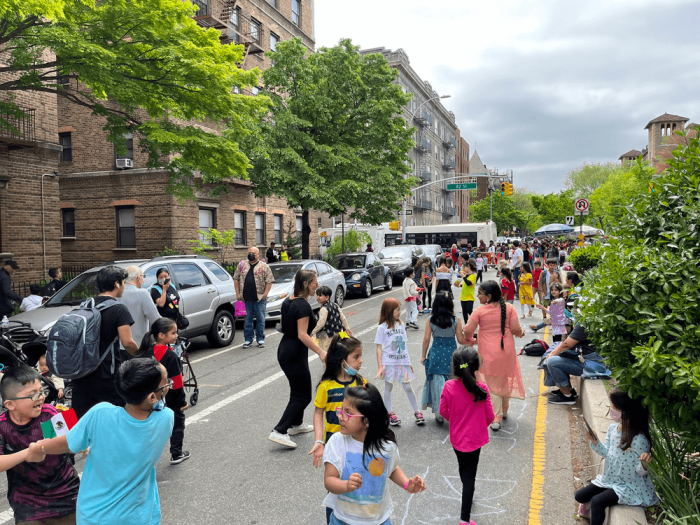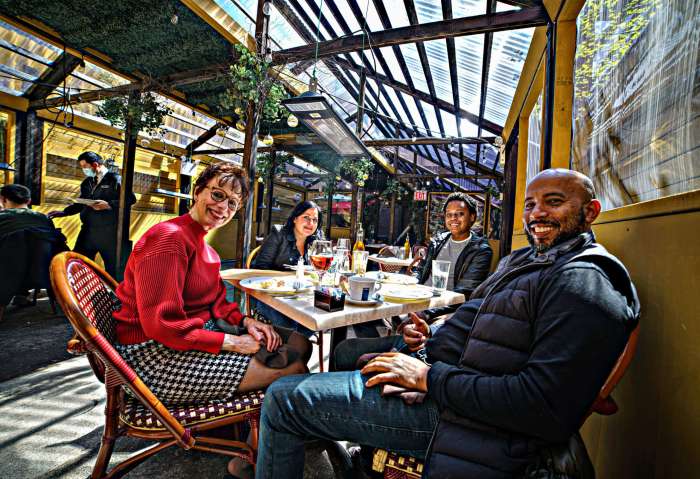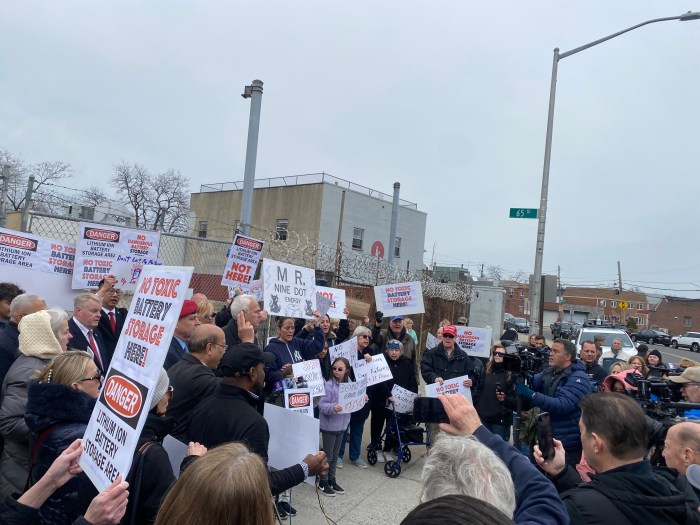
A new bill in the City Council would dramatically restrict ride-hailing service operations, aiming to rein in the rapid growth of companies like Uber and Lyft.
Bronx Councilman Ruben Diaz Sr., chair of the council’s newly formed for-hire vehicle committee, has sponsored the legislation in an attempt to raise the barrier of entry and level the playing field between yellow cabbies and ride-hail drivers.
“I did introduce (a bill) today to try and regulate Uber and to ease the burden on all of these drivers. As you know, four drivers have killed themselves,” Diaz Sr. told drivers at a rally outside City Hall, referencing recent reports of driver suicides. “We will do whatever is possible. This has to end. The abuse of the driver has to end.”
The bill directly targets ride-hail workers. It would ban drivers from operating for more than one ride-hail company — a widely practiced approach drivers use to get extra cash by filling gaps in their shifts — while also restricting them to being affiliated with just one base. Diaz’s bill would also limit app-based drivers of certain companies to operating exclusively in yet-to-be defined “commercially zoned” areas of the city.
At the same time, for-hire drivers would see a significant spike in fees by way of a new, annual $2,000 license charge. All Taxi and Limousine Commission drivers currently pay a $252 license fee every three years and for-hire drivers also pay a $550 vehicle license every two years on top of that.
Bhairavi Desai, the executive director of the New York Taxi Workers Alliance, a group representing licensed city drivers that has been a sharp critic of Uber, supported Diaz’s legislation with one caveat: the $2,000 license fee should be paid by the ride-hail companies, not their drivers.
“The bill is the very first attempt in five years to regulate this market. It is long overdue and that is an attempt that we are incredibly grateful for,” Desai said at the City Hall rally, where her group outlined their own regulation proposals for ride-hails. They include an outright cap on vehicles, establishing a wage floor for drivers and new labor standards.
The TLC has struggled in recent years to address the rise of Uber and Lyft. The number of TLC-licensed drivers has surged from about 130,000 drivers and 74,000 vehicles in 2014 to current totals of about 180,000 drivers and 130,000 vehicles. That 38-percent increase in drivers came as Mayor Bill de Blasio tried and failed to institute a cap on the e-hail industry during his first term. The mayor has recently signaled that he’d be willing to explore the measure once again.
Jim Conigliaro Jr., founder of the Independent Drivers Guild, an Uber-affiliated labor organization, slammed the Diaz legislation during a conference call with reporters Wednesday morning. He called the bill “disastrous” and feared that it would create a “monopoly” with all drivers opting to work for Uber over the smaller companies.
“Unfortunately, our legislators that were put in office to protect working families in New York City and in particular the newly-formed FHV [for-hire vehicle] committee at the New York City Council has put forward legislation that would force drivers deeper into poverty,” Conigliaro Jr. said.
“The outcome is less earnings for workers, more empty cars and possibly the creation of the biggest monopoly in the FHV industry ever,” he continued.
Uber offered similarly sharp criticism of the bill.
“This bill is a cynical attempt to force drivers out of the industry and deny riders the reliable service they have come to enjoy in all five boroughs,” the company said in a statement. “This bill would make drivers pay the city $2,000 a year, take away their ability to earn money with multiple apps and car services, and restrict service to specific neighborhoods. New Yorkers who live in a neighborhood ignored by taxis and underserved by public transit would be hung out to dry.”
An earlier version of this story should have said all current Taxi and Limousine Commission drivers pay a $252 license fee every three years.




































